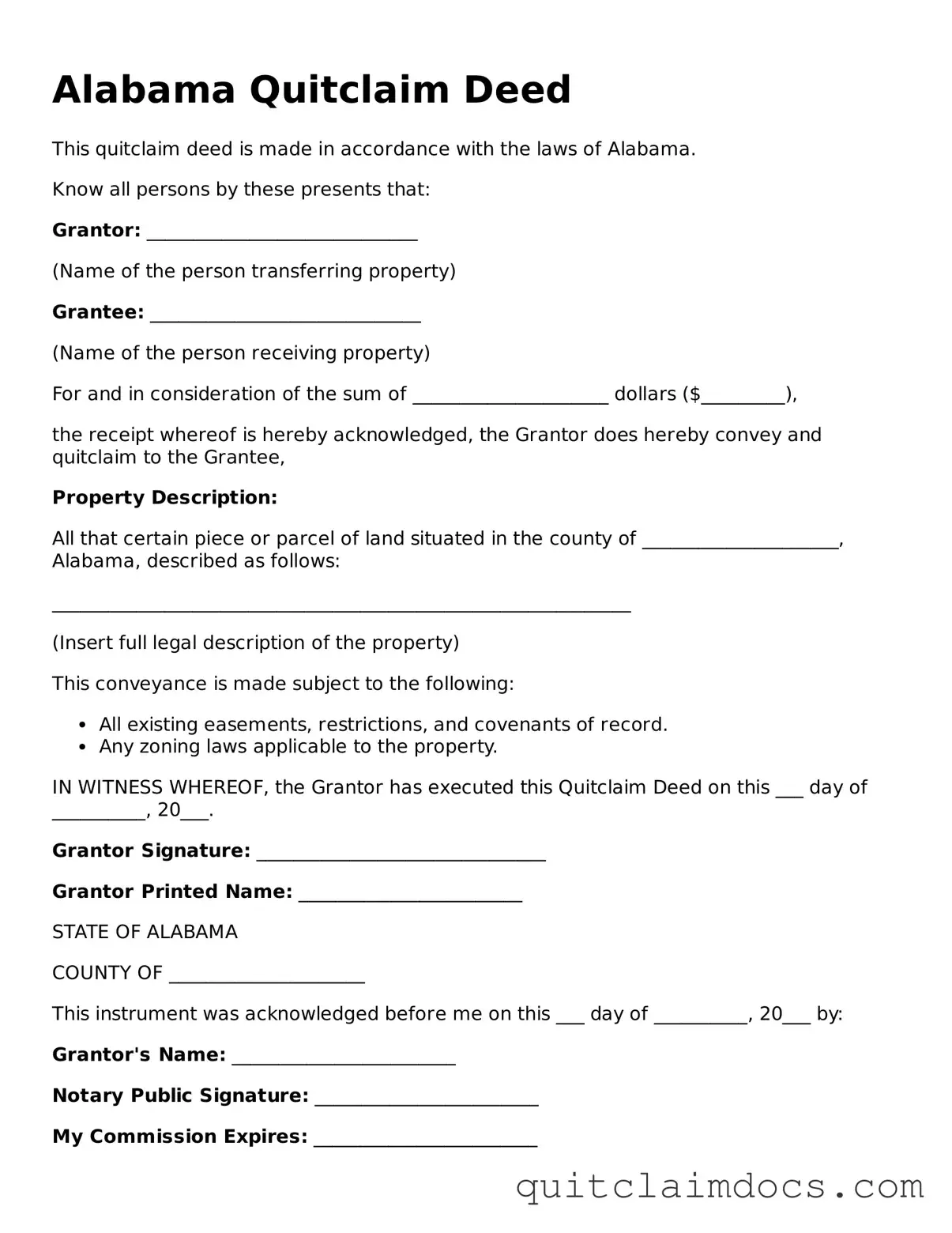Alabama Quitclaim Deed
This quitclaim deed is made in accordance with the laws of Alabama.
Know all persons by these presents that:
Grantor: _____________________________
(Name of the person transferring property)
Grantee: _____________________________
(Name of the person receiving property)
For and in consideration of the sum of _____________________ dollars ($_________),
the receipt whereof is hereby acknowledged, the Grantor does hereby convey and quitclaim to the Grantee,
Property Description:
All that certain piece or parcel of land situated in the county of _____________________, Alabama, described as follows:
______________________________________________________________
(Insert full legal description of the property)
This conveyance is made subject to the following:
- All existing easements, restrictions, and covenants of record.
- Any zoning laws applicable to the property.
IN WITNESS WHEREOF, the Grantor has executed this Quitclaim Deed on this ___ day of __________, 20___.
Grantor Signature: _______________________________
Grantor Printed Name: ________________________
STATE OF ALABAMA
COUNTY OF _____________________
This instrument was acknowledged before me on this ___ day of __________, 20___ by:
Grantor's Name: ________________________
Notary Public Signature: ________________________
My Commission Expires: ________________________
